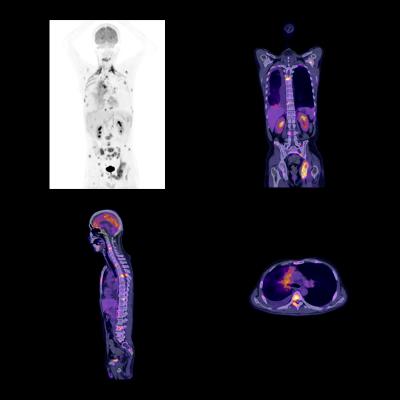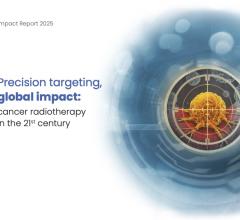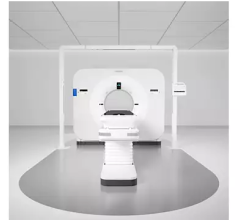
June 13, 2016 — By combining local radiation therapy and anti-cancer vaccines with checkpoint inhibitors, researchers were able to increase the response rate for these new immunotherapy agents in mice.
The findings from the University of Chicago, published in the June 13 issue of the journal Oncotarget, showed this sequence of treatments could open up unresponsive pancreatic cancers to immune cell infiltration, often leading to immunologic control of tumor growth. They may eventually help physicians make better use of checkpoint inhibitors to treat many types of cancer.
Despite vast enthusiasm among cancer specialists about this emerging field, most patients currently have a limited response to checkpoint inhibitors. The average survival time for patients with advanced melanoma, for example, was about 25 months after starting treatment. That falls to 15 months for lung and kidney cancers, and less than eight months for some head and neck cancers.
“Our results provide a step-by-step strategy to break the immune barriers that protect aggressive tumors by converting so-called ‘cold,’ or non-T cell-inflamed tumors, to a ‘hot,’ or T cell-inflamed phenotype,” said study author Ralph Weichselbaum, M.D., co-director of the University of Chicago Ludwig Center for Metastasis Research and chairman of radiation and cellular oncology at the University. “By promoting T cell infiltration, radiation therapy improved the efficacy of tumor vaccines and checkpoint inhibitors.”
The researchers chose a difficult animal model, mice that had fragments of murine pancreatic cancer implanted in their flanks. Results from immunotherapy trials in human patients with pancreatic cancer have been dismal. The only checkpoint inhibitor to show any activity in pancreatic cancer produced a partial response in 8 percent of patients.
The UChicago team chose this model because it produced “cold” tumors, cancers that were highly resistant to immunotherapy. These implanted tumors tended to have minimal infiltration with CD8+ T cells, the key players in tumor immunity, an indication that the mouse’s immune system did not recognize the tumor tissue as foreign. These mice also had high expression of PD-L1 in regions surrounding the tumor. PD-L1 dampens the immune system’s ability to respond. The combination of low T cell infiltration and high PD-L1 expression predicts poor survival.
Efforts to boost the immune response with a vaccine designed to provoke an immune response had little impact on tumor growth, even when paired with checkpoint blockade.
Adding local radiation therapy to the tumor vaccine, however, did enhance T cell infiltration into tumors. Adding a checkpoint blocker, after a single typical dose of radiation (20 Gray) and a vaccine tipped the balance, inhibiting tumor growth and extending survival of tumor-bearing mice.
“These results suggest that radiation stimulated the recruitment of vaccine-primed T cells while anti-PD-L1 therapy protected these T cells from local immune suppression,” the authors wrote. “This may be a promising therapy.”
“Our results suggest that radiation therapy could synergize with immunotherapy to convert cancers with an unfavorable cold phenotype to a more favorable hot phenotype,” said Weichselbaum. “The radiation’s effects may include release of cell fragments and other signals that stimulate the immune system, as well as elimination of some of the immunosuppressive factors.”
The researchers acknowledge some limitations. The work was done in mice and research on cancer vaccines is still in its infancy. But they argue that the combination of local radiation and vaccination to induce T cell infiltration, followed by a checkpoint inhibitor to disable PD-L1-mediated immunosuppression, could increase the odds of tumor control.
“We feel confident that our model, with further testing, can covert unresponsive ‘cold’ cancers to something more responsive to treatment, leading to improved outcomes for more patients,” Weichselbaum said. “This study, based on a very challenging animal model, opens up a new strategy that could make immunotherapy more effective for more cancer types. Intriguingly, the study demonstrates new antitumor effects of radiation therapy in addition to the direct cytotoxic effects of radiation on tumor cells.”
The study, “Combination of radiotherapy and vaccination overcome checkpoint blockade resistance,” was funded by the Virginia and D.K. Ludwig Fund for Cancer Research, the Rolfe Pancreatic Cancer Foundation, the Foglia Foundation and NIH grant CA134563.
Additional authors include Wenxin Zheng, Kinga Skowron, Jukes Namm, Byron Burnette, Christian Fernandez, Ainhoa Arina, Hua Liang, Michael Spiotto and Mitchell Posner from the University of Chicago, and Yang-Xin Fu from the University of Texas Southwestern.
For more information: www.impactjournals.com/oncotarget


 December 11, 2025
December 11, 2025 









